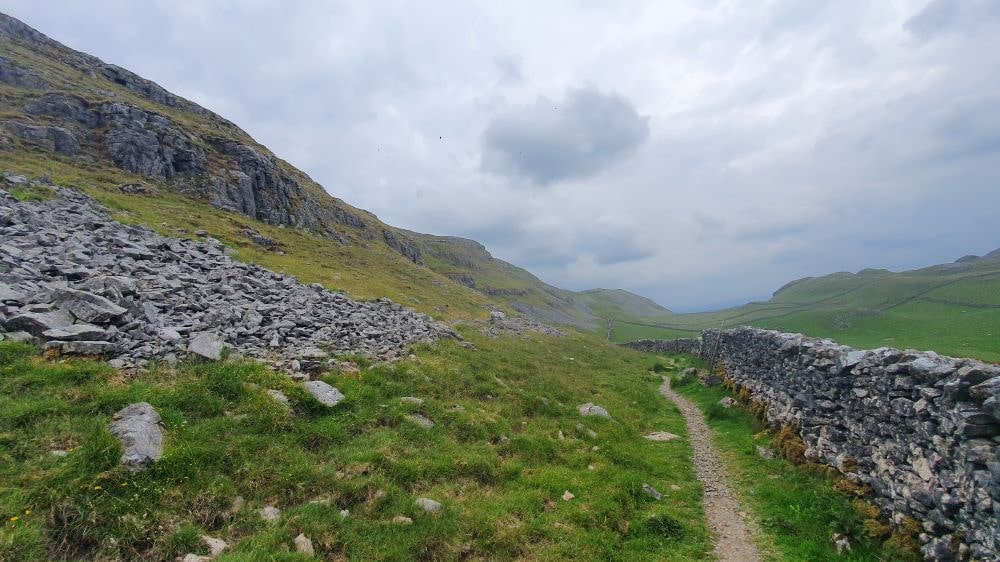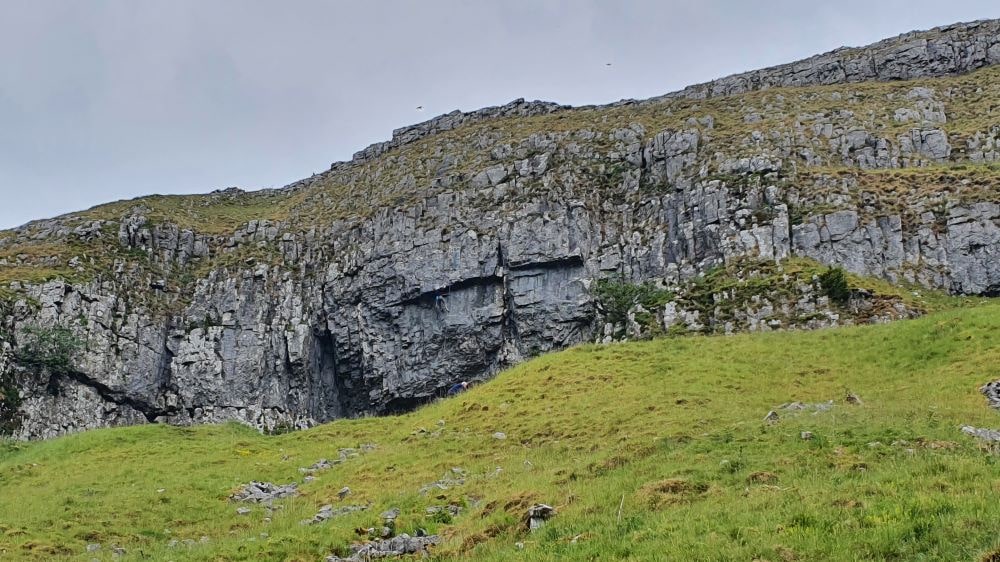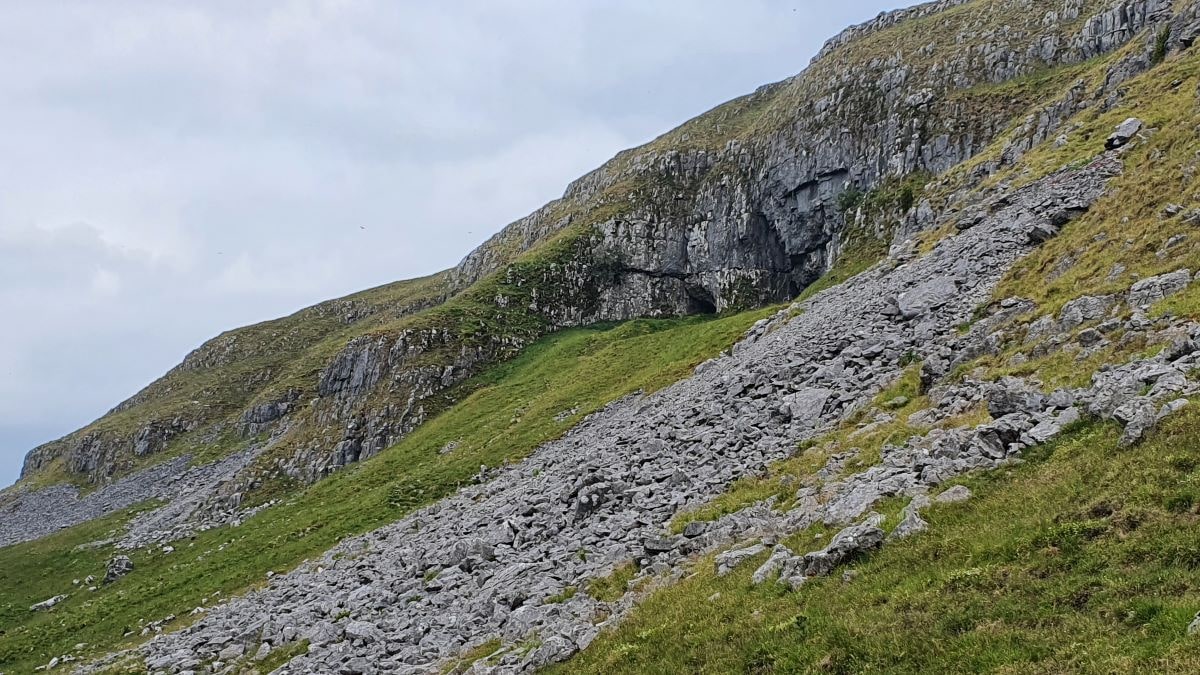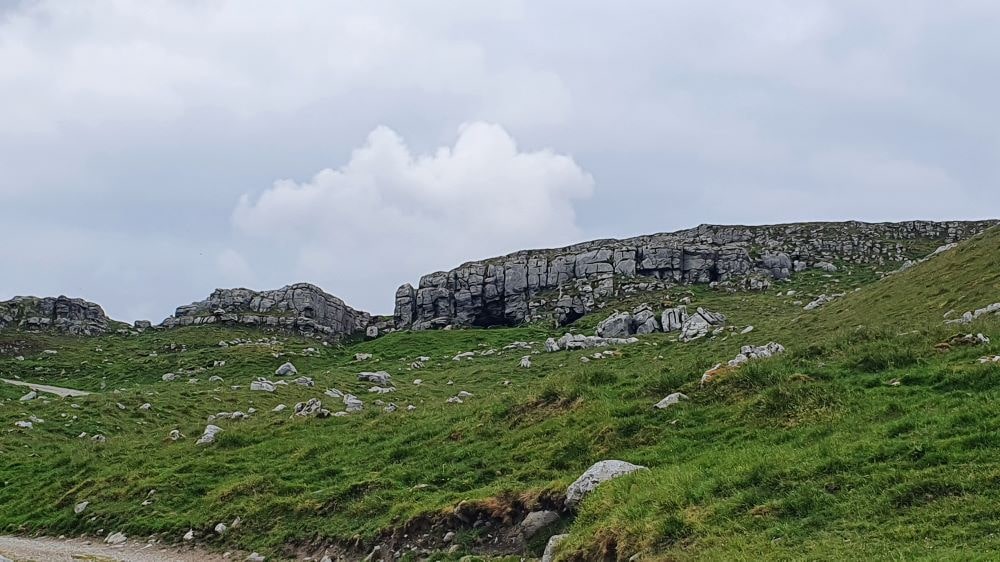Attermire Scar, Warrendale Knots, Victoria Cave, Jubilee Cave
Attermire Scar
Attermire lies high above Settle and is a breathtaking series of limestone scars, scree slopes and caves.
The limestone was formed in shallow tropical seas approx. 330 million years ago.

Footpath at the base of Attermire Scar and Scree Slope
Warrendale Knots
Warrendale Knotts is a series of limestone knolls immediately to the west of Attermire Scar.
Victoria Cave
(for safety reasons, it's recommended that visitors don't enter Victoria Cave)
Victoria Cave is the largest cave in the scars and was re-discovered in 1837.
Archaeological excavations within the lower layers of cave earth have revealed bone remains of hippo, spotted hyena, rhino, lion and elephant dating back 120,000 years.
Examination of the upper layers of cave earth identified activity within the Neolithic (~6,000 BC) and Romano-British (~AD 500) periods.

Entrance to Victoria Cave high on Attermire Scar
(can you spot the climber?)

Entrance to Victoria Cave sitting above the scree slope on Attermire Scar
Jubilee Cave
(for safety reasons, it's recommended that visitors don't enter Jubilee Cave)
Jubilee Cave has three inter-connected passages.
Excavations have revealed undated human remains as well as evidence from the Mesolithic (~9,600 BC), Neolithic (~6,000 BC) and Romano-British (~AD 500) Periods.

Jubilee Cave - at the northern end of Attermire Scar
MORE INFORMATION
Dearne, Martin J & Lord, Thomas C (1998) The Romano-British Archaeology of Victoria Cave, Settle. Oxford: BAR British Series 273
King, Alan (1970) Early Pennine Settlement. Clapham: Dalesman